24. Tree ADT
Trees are nonlinear data structures
The data does not naturally arrange in an obvious linear, sequential way
Trees are useful when organizing data in some hierarchical way
Family trees
Inheritance
File systems on a computer
Decision trees
Table of contents of a book
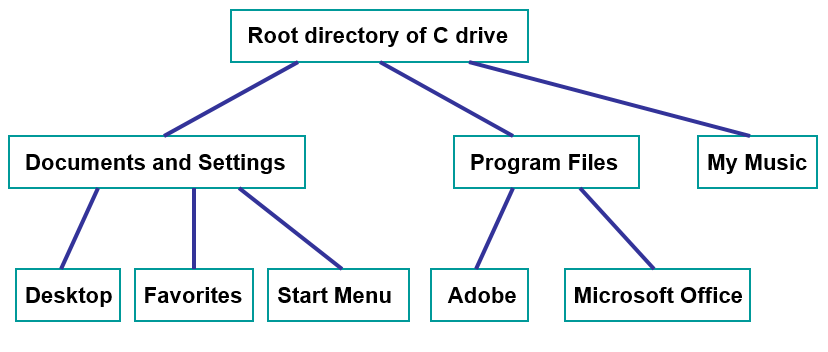
A simple file system on a computer.
24.1. Definitions & Terminology
24.1.1. Tree Definition
A tree is a collection of elements such that:
It is empty
Or, it has a special element called the root, from which descends zero or more trees (subtrees)
Notice that this definition is recursive
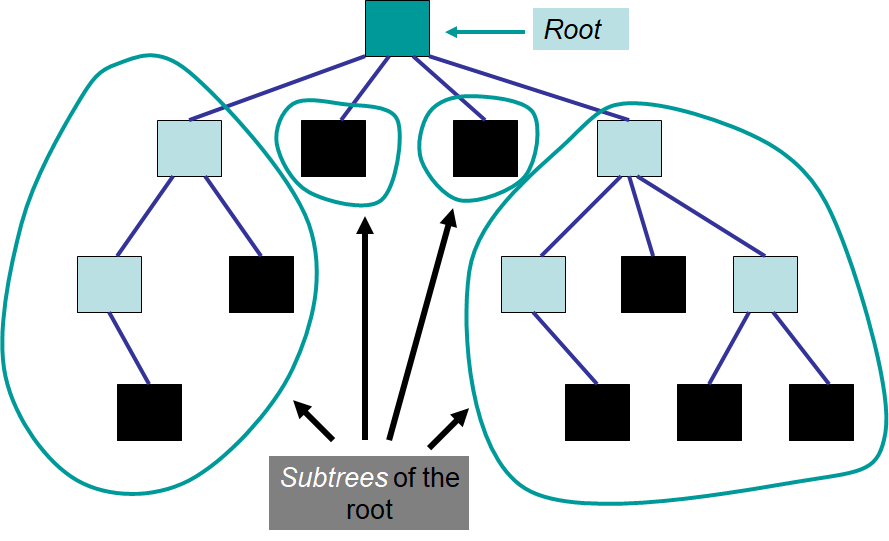
Example of an arbitrary tree with subtrees identified. The root element has four existing subtrees. Each of these subtrees has a root with zero or many descending subtrees.
24.1.2. Nodes
A node is a single entity in the tree
An edge connects nodes
The root node is a special element that is the origin of the tree
A tree can have one or zero root nodes
A leaf node is a node without an edge to a child node
An interior node is not a leaf node
An empty tree is a tree with no nodes or edges
This is still a tree based on the definition of the tree discussed above
Think empty stack/queue/bag — they still exist, but they’re just empty
Warning
It is possible to find alternative definitions of trees; however, the definition included here is used as it is common.
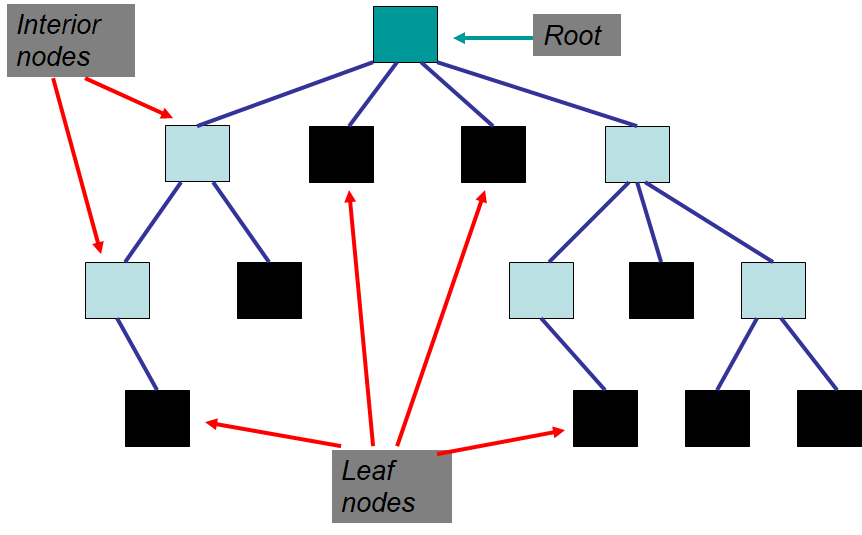
Tree with nodes labelled as a root, interior, or leaf node. In this example, there are six interior nodes, including the root, and eight leaf nodes.
24.1.3. Relationships
A parent/predecessor of a given node is the node directly above in the hierarchy
Each node can have at most one parent, except for the root, which has no parent
A child/successor of a given node is the node directly below in the hierarchy
Each node can have any number of children
A sibling of a given node is a node that has the same parent
An ancestor of a given node is the parent, or the parent’s parent, or …
A descendant of a given node is the child, or the child’s child, or …
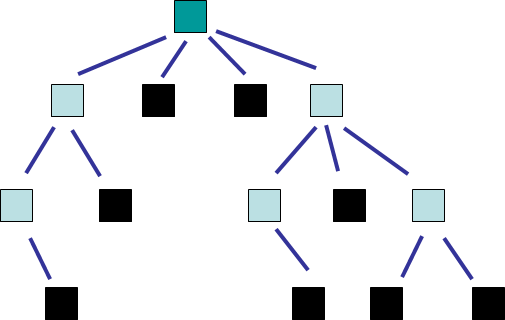
Example of an arbitrary tree.
Observations
A leaf node cannot have any children
The root node of the whole tree has no parent node
With the exception of the root node, each node has exactly one parent
A subtree of a given node is a child node and all descendants
A subtree is itself a tree
A node may have many subtrees
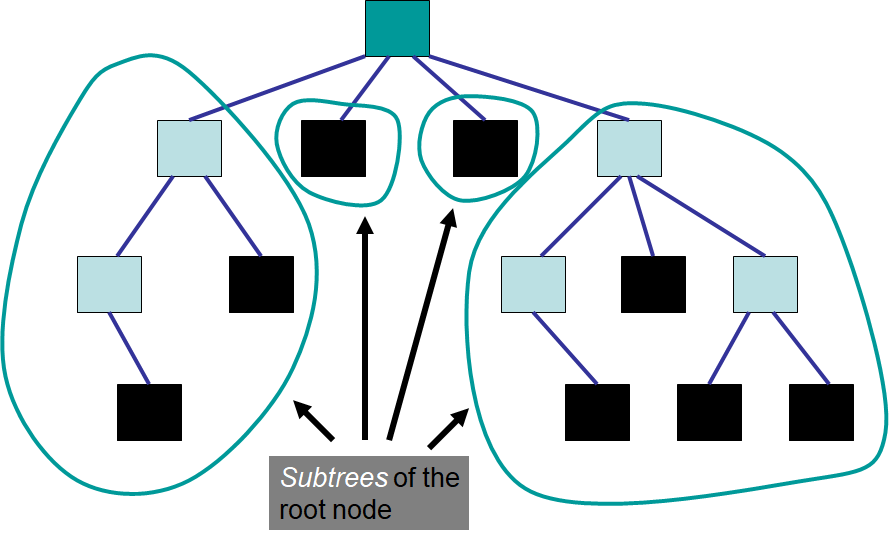
Tree with the subtrees of the root node identified.
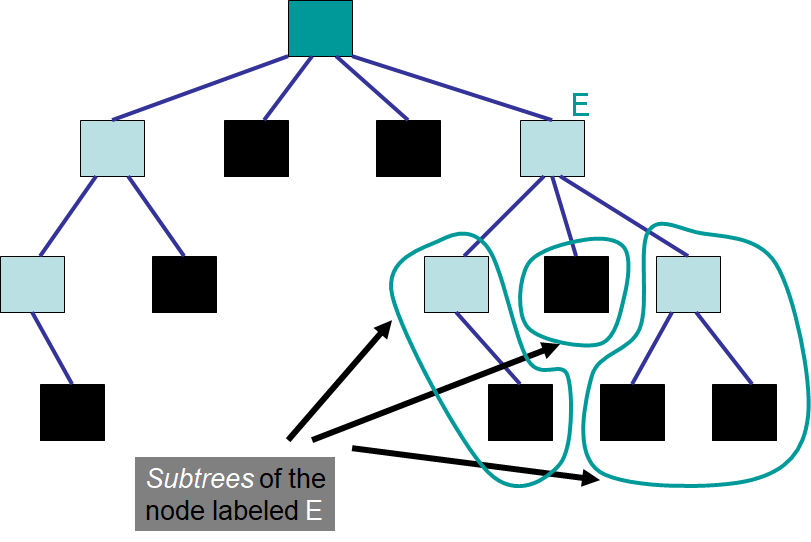
Tree with the subtrees of the node labelled “E” identified.
24.1.4. Properties
A path is the sequence of nodes and edges leading from one node to another
The path length is the number of edges in the path
The level of a given node is the number of edges between the root and the node
Recursive definition
The level of the root is
0The level of a node that is not the root is the level of its parent
+ 1
The height of a tree is the maximum level of the tree’s nodes
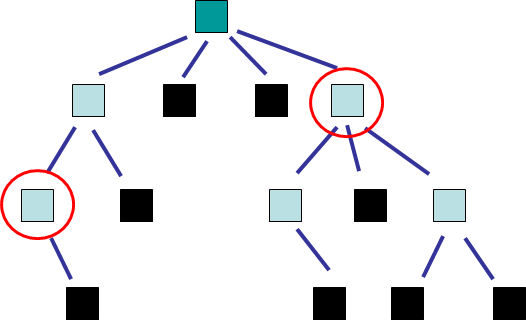
Tree with two nodes emphasized.
Observations
The path length between the two emphasized nodes is three (
3)The height of this tree is three (
3)A tree with only a root has a height of zero (
0)The height of an empty tree is negative one (
-1)
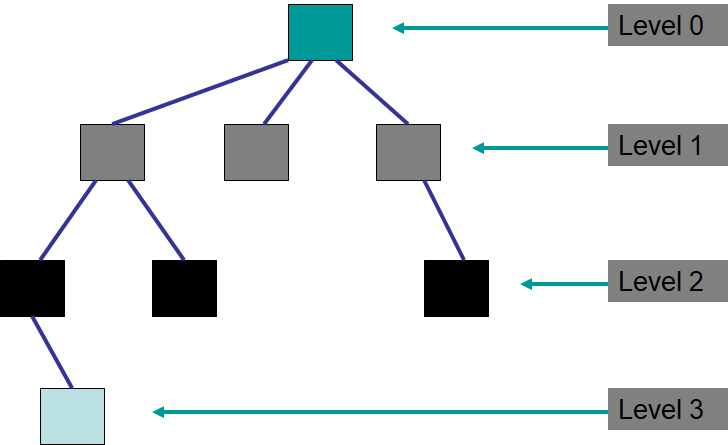
Tree with three levels. This tree has a height of three (3).
The degree/arity of a given node is the number of children the node has
The degree/arity of a tree is the maximum degree/arity of the tree’s nodes
24.2. For Next Time
Read Chapter 10 Sections 1 – 3
10 pages